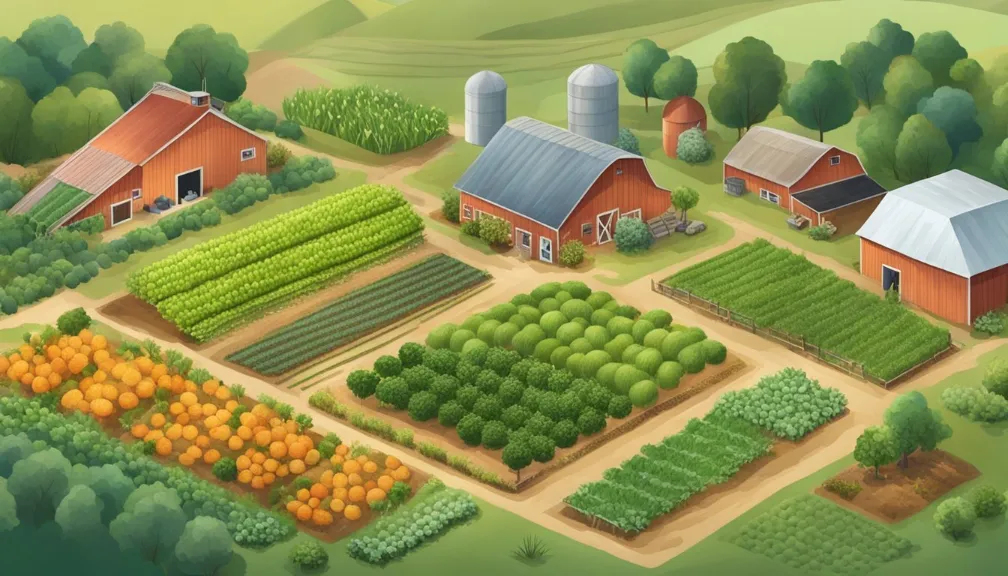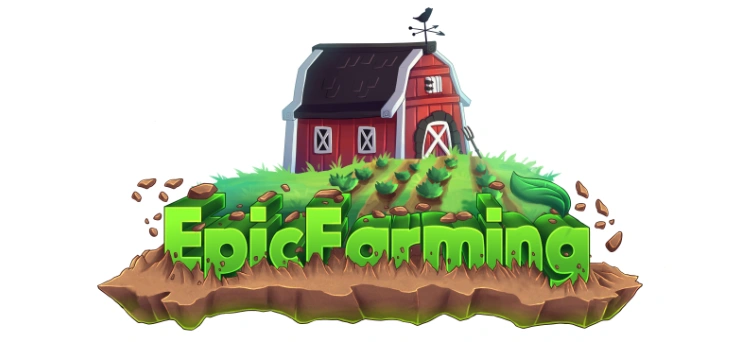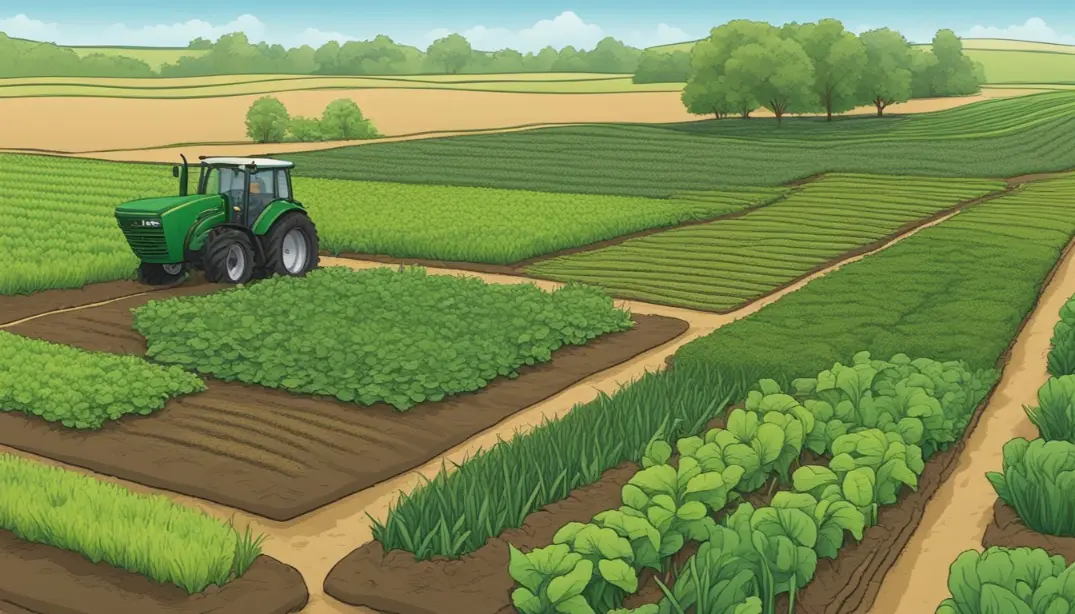Terrace farming, an ancient agricultural technique, has stood the test of time, proving to be an ingenious solution to the challenges posed by hilly and mountainous terrains.
It involves creating stepped or layered levels on sloping land to cultivate crops, offering an innovative approach to maximize arable land and ensure sustainable agriculture.
Let’s delve into the fascinating world of terrace farming, exploring its best examples, benefits, advantages and the crucial role it plays in soil conservation.
What Is Terrace Farming?
It is a method of growing crops on slopes by building terraces, which are flat platforms or steps, to prevent soil erosion and water loss.
Rice-growing countries in Asia, such as Vietnam, Philippines, and Indonesia, commonly use it, creating a stunning landscape of green fields with terraces.
The Inca people, residing in the South American mountains, invented it, and it finds application in various regions worldwide, including the Canary Islands, Africa, and Europe.
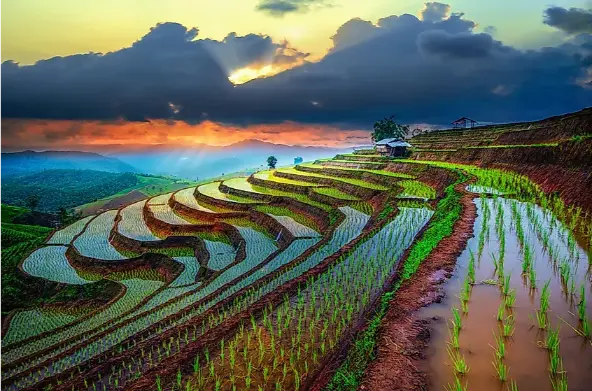
Best Examples Of Terrace Farming
Some of the best examples of Terrace Farming are:
The Rice Terraces of the Philippine Cordilleras, which are a UNESCO World Heritage Site. These terraces were carved by hand over 2,000 years ago by the Ifugao people, who still maintain and cultivate them today.
Covering an area of approximately 10,000 square kilometers, these terraces stand as both an engineering marvel and a living cultural landscape.
Nestled in China, the Longji Rice Terraces, also known as the Dragon’s Backbone, boast a rich history. Built over 700 years ago by the Zhuang and Yao ethnic minorities, these terraces are not only a testament to ancient agricultural wisdom but also home to the communities that crafted them.
The terraces span over 66 square kilometers and change color with the seasons, from green in spring and summer to golden in autumn and white in winter.
The Banaue Rice Terraces in the Philippines, which are also called the Eighth Wonder of the World. These terraces were also built by the Ifugao people over 2,000 years ago, and they cover an area of about 5,000 square kilometers.
The terraces are fed by an ancient irrigation system that draws water from the rainforests above them.
The Moray Terraces in Peru, which are circular terraces that resemble a giant amphitheater. The Inca people built these terraces as an agricultural laboratory, experimenting with different crops and microclimates.
The terraces have a temperature difference of up to 15 degrees Celsius between the top and the bottom, creating a variety of growing conditions.
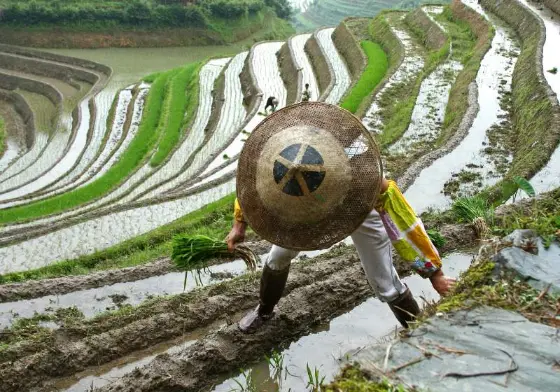
Benefits Of Terrace Farming
Terrace Farming has many benefits, such as:
| Sr No. | Benefits |
|---|---|
| 1- | It prevents the washing away of soil nutrients by the rains, which leads to the growth of healthy crops. |
| 2- | It prevents the carrying away of plants by the heavy flowing rivers of water, which reduces crop loss and damage. |
| 3- | It conserves water by trapping rainwater and allowing it to seep into the soil, which reduces the need for irrigation and increases the water availability for the crops. |
| 4- | It makes the idle hillside land productive, which increases the food security and income of the farmers and the communities. |
| 5- | It creates a beautiful and diverse landscape, which attracts tourists and preserves the cultural heritage and biodiversity of the region |
How Does Terrace Cultivation Help In Conserving Soil?
Terrace cultivation helps in conserving soil by reducing the slope and the speed of water runoff, which reduces the soil erosion and the loss of topsoil.
Terrace cultivation also improves the soil quality and fertility by adding organic matter and nutrients to the soil, which enhances the soil structure and water retention.
Terrace cultivation also prevents the formation of gullies and landslides, which can damage the soil and the crops.
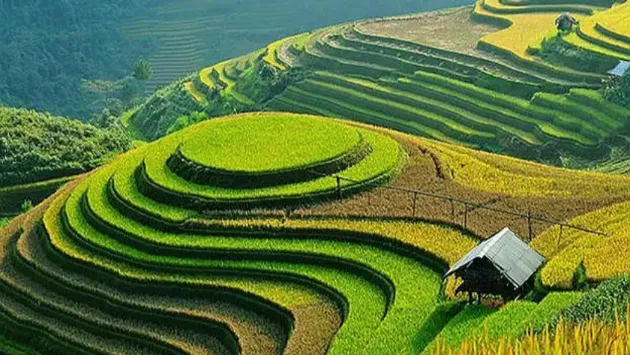
Advantages Of Terrace Farming
Some of the Advantages of Terrace Farming are:
It allows the cultivation of crops that require a lot of water, such as rice, on hilly or mountainous regions, where water is scarce or unevenly distributed.
And also it increases the crop yield and quality by creating a favorable microclimate and environment for the crops, such as optimal temperature, sunlight, moisture, and drainage.
Reducing the labor and cost of farming by minimizing the need for plowing, weeding, fertilizing, and pest control, the terraces create a natural and self-sustaining system.
This streamlined approach not only enhances efficiency but also promotes sustainable agricultural practices.
It diversifies the crop production and income of the farmers, as they can grow different crops on different terraces, such as rice, vegetables, fruits, herbs, and flowers.
Terrace farming not only enhances the social and economic development of rural areas but also creates employment opportunities, improves living standards, and promotes education and health.
Conclusion
Terrace Farming is an ancient and innovative method of farming that has many benefits and advantages. It prevents soil erosion and water loss, conserves water and soil, increases crop yield and quality, diversifies crop production and income, and creates a beautiful and diverse landscape.
And it is a sustainable and eco-friendly way of farming that preserves the cultural heritage and biodiversity of the region. It is a valuable and viable option for farming in hilly or mountainous regions.
Read Also:
What Is O Farming: Make Money Online, Get Start & Benefits
Precision Farming: Revolutionizing Agriculture For A Sustainable Future
Palworld Farming: How To Grow And Harvest Food With Your Pals
Ore Farming Palworld: A Beginner’s Guide
O Farming Oil: A New Trend In Online Brokerage & Benefits

Meet Our Expert Agricultural Administrator
Welcome to agrigreenhands.com, your dedicated hub for all things related to agricultural farming. Leading the way in our commitment to sustainable and innovative practices is Jawad Hussain, our esteemed administrator with a profound background in agriculture….
